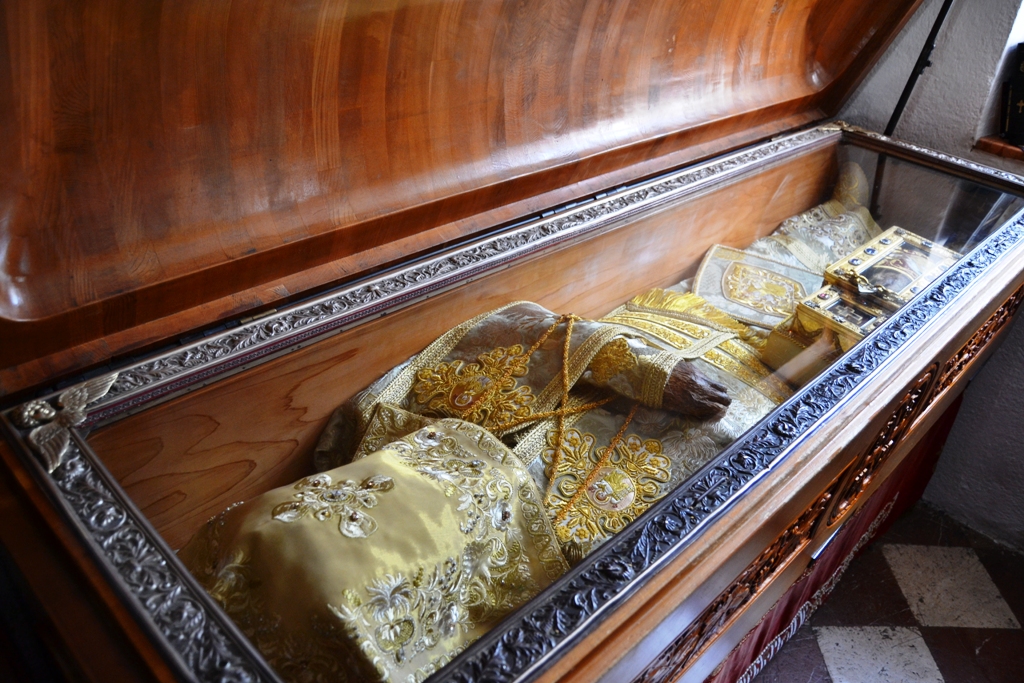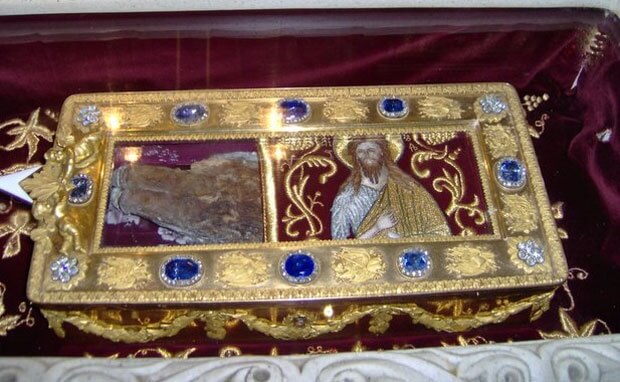The hand of Saint John with which He baptized Jesus Christ was revered by the first Christians as a great sanctuary.
When did the Hand of Saint John the Baptist arrive in Serbia?
The hand of Saint John the Baptist has long been in the Russian imperial Romanov family. After the affliction of the imperial Romanov family, the right hand of St. John was found in the Emperor Maria Fyodorovna, the wife of Emperor Alexander the Third and the mother of the last Russian Tsar Nikolai. In 1919, she somehow managed to get out of the new Soviet state and reach London via Crimea, from where she would head for a permanent and safe haven in Denmark.
When Maria was finally safe, in agreement with Metropolitan Antoni Hrapavicki, she decided to surrender this shrine to the Serbian royal house of Karadjordjevic. In the late 1920s, the hand of Saint John was brought to Belgrade by Bagration Timuras.
In gratitude Serbian King Alexander Karadjordjevic offered Timuras a high rank in the Yugoslav army. The Russian did not want to accept it like that, but demanded that he starts his education from the beginning and finishes the Military Academy first. He later became an officer in the King’s Guard Battalion.
In the first years the Hand was located in the temple of the old palace, from where it was transferred to the church in Dedinje, Belgrade.
When World War II began, the Hand was transferred from Belgrade and hidden with other valuables in the Ostrog Monastery in Montenegro. It was later transferred to the Cetinje Monastery in city of Cetinje, Montenegro, where it is still housed today.
The historical path of the relics of St. John the Baptist
The Holy Apostle and Evangelist Luke while visiting various cities, found himself in the city of Sevastium, the place where the beheaded body of St. John the Baptist was buried.
As he was being led further to Antioch, he expressed his desire to bring with him the relics of the great prophet, fearing that they would not be burned by the then Roman commander Julian the Apostate.
As he was being led further to Antioch, he expressed his desire to bring with him the relics of the great prophet, fearing that they would not be burned by the then Roman commander Julian the Apostate.
The Sevastians did not want to give up the whole relics, so they gave St. Luke only the right hand. When, during the Middle Ages, the Arabs conquered Antioch, the hand was secretly transferred to Constantinople in the church of the Byzantine imperial palace dedicated to Our Lady of Faroe. It remained there until 1484 when, for security reasons, the knights of John’s order transferred it to Malta.

During Napoleon’s conquests, Malta was conquered. Then, in 1798, the only wholly preserved part of the relics of Saint John the Baptist came to Russia for the possession of the Romanov family.
At the behest of the top of the Russian Orthodox Church, in 1799, the newly acquired holy relics – the right hand and three pieces of the venerable head of St. John the Baptist – were transferred to Petersburg. There, with the highest ceremonies, they were housed in the great court house of the Holy Savior, next to the Imperial Winter Castle.
After the fall of the Romans, it was not known for a long time where the relics were located. Many stories ran through. One of the stories started from Spain, where Gering allegedly came to the Hand and personally handed it over to Hitler.
However, the relic was in Yugoslavia all the time.

At the end of World War II, one of the monks from the Ostrog monastery told the new communist authorities what was in their cells. In the strictest secrecy, the suitcase with the hand of John the Baptist was moved to the Cetinje Museum. It was not until 1968 that one of the police officers who had taken part in the action, carrying a bit of remorse, informed the abbot Mark, the monastery elder, of the whereabouts of the relics.
In addition to this relic, the relics of St. Peter of Cetinje and the particles of the Holy Cross are in the Cetinje Monastery.


